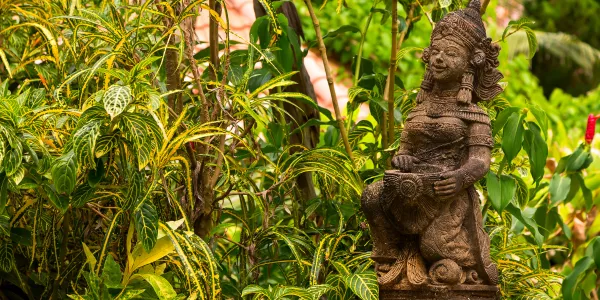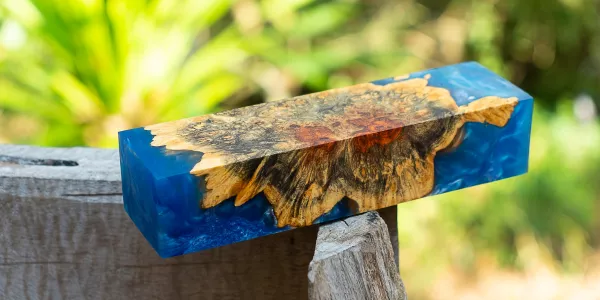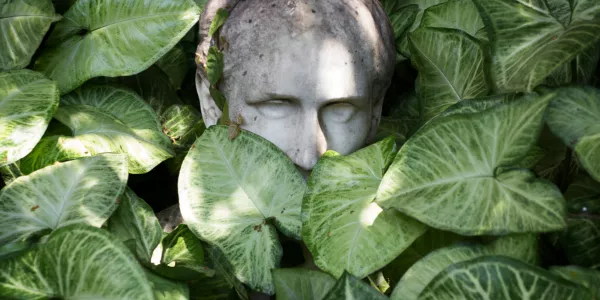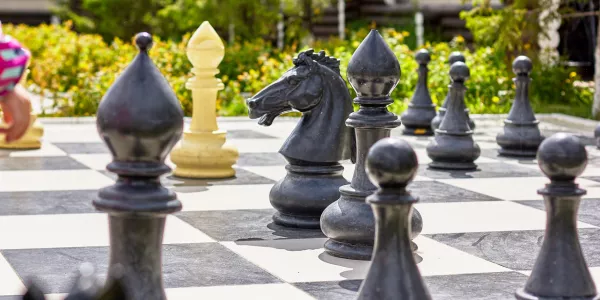Your garden offers an ideal setting to craft a delightful oasis that truly reflects your personal style, providing a sanctuary where you'll enjoy spending countless hours unwinding, and if you want to create something that will marvel everyone who comes to spend time with you in your outside area, you can opt for garden sculptures.
Garden sculptures add an element of intrigue and beauty to outdoor spaces, transforming ordinary gardens into captivating landscapes. Whether you're a seasoned gardener or just beginning to dabble in the world of garden décor, understanding the nuances of garden sculptures can significantly enhance your outdoor sanctuary.
To achieve a vision of harmony and aesthetic appeal, it's crucial to concentrate on positioning your statues in the optimal spot for the greatest effect. Do you want to learn more about garden sculptures? Just keep reading!
What is a Sculpture Garden?
A sculpture garden is a purposefully designed outdoor space that showcases a collection of sculptures in a natural or landscaped setting. Unlike traditional gardens that focus primarily on plant life, sculpture gardens integrate art into the outdoor environment, creating a harmonious blend of nature and human creativity.
These gardens can be found in public parks, museums, and private estates, offering visitors a unique and immersive artistic experience.
What is a Sculpture Garden?
A sculpture garden is a purposefully designed outdoor space that showcases a collection of sculptures in a natural or landscaped setting. Unlike traditional gardens that focus primarily on plant life, sculpture gardens integrate art into the outdoor environment, creating a harmonious blend of nature and human creativity.
These gardens can be found in public parks, museums, and private estates, offering visitors a unique and immersive artistic experience.
What Do You Call Garden Sculptures?
Garden sculptures, also known as yard statues, garden statuary, or lawn ornaments, are three-dimensional artworks that come in a diverse array of forms to adorn and enrich outdoor spaces.
These pieces can range from lifelike representations of animals and people to everyday objects and intricate abstract designs. Notably, some sculptures, known as spinners, include parts that elegantly rotate with the wind, adding a dynamic element to their appeal.
Available in various sizes, styles, and materials, from classical figures to modern abstract creations, garden sculptures serve a dual purpose. They not only act as decorative elements that beautify the garden but also as focal points that introduce character and depth, transforming the outdoor environment into a captivating visual experience.
Types of garden sculptures: From material to purposes
Garden sculptures vary widely in terms of materials, styles, and purposes, allowing gardeners and homeowners to find pieces that perfectly complement their outdoor sanctuaries. Let's explore the different types of garden sculptures based on material and purpose:
Based on Material
- Stone Sculptures

Often carved from granite, marble, or limestone, stone sculptures add a classic and timeless appeal to gardens. They are durable and can withstand harsh weather conditions, aging gracefully over time.
- Metal Sculptures

Crafted from materials such as bronze, iron, steel, or copper, metal sculptures offer a wide range of finishes and patinas. They can range from sleek and modern designs to more rustic and whimsical pieces.
- Wood Sculptures

Wooden sculptures bring a natural and organic touch to garden settings. They are often carved from durable woods like teak, cedar, or redwood, which resist rot and decay.
- Resin Sculptures

Made from synthetic resin, these sculptures offer versatility in design and are lighter and often more affordable than their stone or metal counterparts. Resin sculptures can mimic the look of stone, metal, or wood and are suitable for more whimsical or detailed designs.
- Concrete Sculptures

Concrete offers a sturdy and versatile medium for garden sculptures, capable of mimicking other materials like stone or marble. It's particularly well-suited for large, imposing pieces.
- Glass and Ceramic Sculptures

These sculptures add vibrant colors and unique textures to gardens. Glass and ceramic pieces can range from mosaic stepping stones to intricate statues and figurines.
Based on Purpose
- Decorative Sculptures

Primarily focused on aesthetics, decorative sculptures serve to beautify the garden space, often reflecting personal taste or artistic expression.
- Functional Sculptures

These sculptures combine form with function, such as sculpted bird baths, sundials, or garden benches, adding utility to their beauty.
- Thematic Sculptures

Thematic sculptures adhere to a specific theme or style, such as Zen garden statues, fairy-tale figures, or wildlife replicas, helping to create a cohesive narrative within the garden.
- Focal Points

Large or striking sculptures are often used as focal points in garden design, drawing the eye and anchoring the garden's layout.
- Memorial Sculptures

Some sculptures serve as memorials or tributes, offering a space for reflection and remembrance within the tranquility of the garden.
- Interactive Sculptures

Designed for engagement, these sculptures may invite touch, movement, or play, adding a dynamic element to the garden experience.
How Do I Display Statues in My Garden?
Incorporating statues into your garden is a thoughtful process that intertwines with both the aesthetics and the atmosphere of your outdoor space. To ensure that each sculpture enhances the beauty of your garden, it's essential to consider several key aspects:
Starting with Purpose
Identifying the role you envision for a statue in your garden is the first step. These pieces often serve as focal points, designed to capture attention and add charm. Their strategic placement can disrupt the uniformity of greenery and immediately draw the eye, enriching the garden's overall ambiance.
Finding the Right Spot
The layout of your garden, including the positioning of trees, plants, and shrubs, plays a pivotal role in where a statue should be placed. Sculptures can be effectively accentuated by the soft, natural lines of bushes and hedges, making them appear as an integral part of the landscape.
Whether nestled within a vibrant flower bed or standing at the center of a garden feature, experimenting with various locations can help you discover the ideal setting for your statue.
Balancing and Harmonizing
The size of the statue should be in proportion to your garden space, avoiding the overwhelming presence of large sculptures in small areas or the inconspicuousness of smaller pieces in vast spaces. Select sculptures that resonate with the theme and style of your garden, be it a tranquil Asian-inspired retreat or an enchanting fairy-tale environment, to amplify the garden's mood.
Enhancing Visibility and Integration
Position your sculptures where they are most visible and can be fully appreciated, potentially using them as dynamic focal points to guide visual flow through the garden. Integrating sculptures with natural elements, such as placing them among plants, near water features, or along pathways, helps achieve a harmonious blend with the garden's natural beauty.
Contrasting and Complementing
Not all statues need to dominate as the centerpiece. Utilizing a sculpture to complement and contrast with your garden's flora can introduce a sophisticated layer to your design, offering a pleasing juxtaposition to the vibrant hues of your flower beds.
Utilizing Unique Spaces
Don't overlook the potential of corner spaces in your garden, which can serve as ideal spots for statues. Our natural inclination to look towards corners makes them perfect for creating impactful visual statements with artful sculptures.
Personal Style and Selection
Choosing a garden statue is a deeply personal decision, akin to selecting a piece of art. It's important to select a statue that not only appeals to your personal taste but also complements the overall style of your garden, whether you prefer the grace of classical sculptures or the boldness of modern designs.
Remember, the natural setting of a garden can beautifully accommodate both traditional and contemporary styles, making it a versatile backdrop for your chosen pieces.
How Do I Choose a Garden Sculpture?
When it comes to the actual selection of a garden sculpture, it's important to balance personal taste with the practical aspects of your garden's layout and theme. Factors to consider include the material of the statue (such as stone, metal, wood, or resin), which affects both the look and longevity of the piece, and the style, ensuring it aligns with the overall theme of your garden, whether that's classical, modern, or rustic.
Additionally, the size and scale of the sculpture should be appropriate for your garden's dimensions, avoiding pieces that overwhelm the space or get lost in it. By thoughtfully evaluating these considerations, you can choose a sculpture that not only suits your style but also enhances the beauty and harmony of your garden.
People also ask
Can garden sculptures withstand all weather conditions?
Most garden sculptures are designed to be weather-resistant, but the durability can vary depending on the material. Stone and metal are typically more resilient than wood and resin.
How often should I maintain my garden sculpture?
Maintenance frequency depends on the material and your desired look. Some sculptures may require regular cleaning and protective treatments, while others are best left to age naturally.
Are garden sculptures suitable for small spaces?
Absolutely. Even in small gardens, a well-chosen sculpture can serve as a stunning focal point without taking up much space.

 Marcio Vasconcelos
Marcio Vasconcelos





